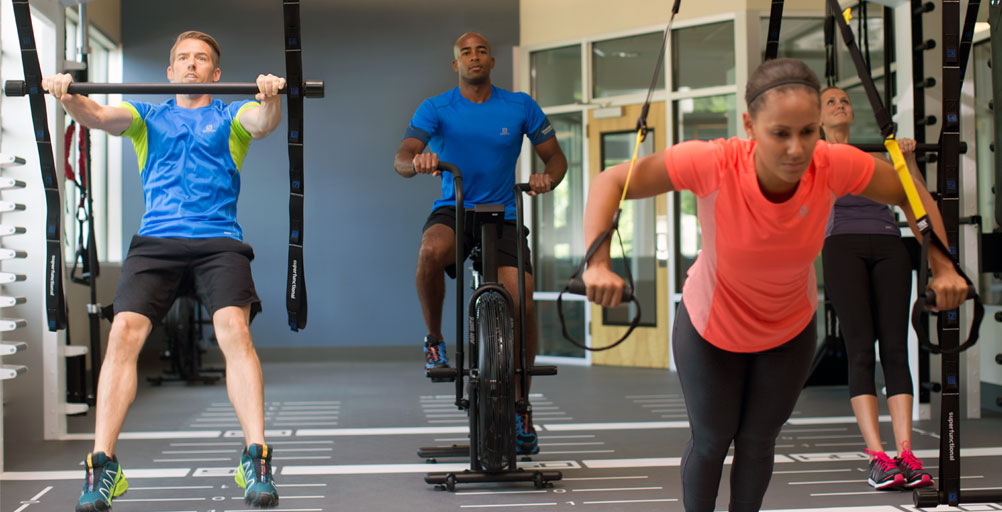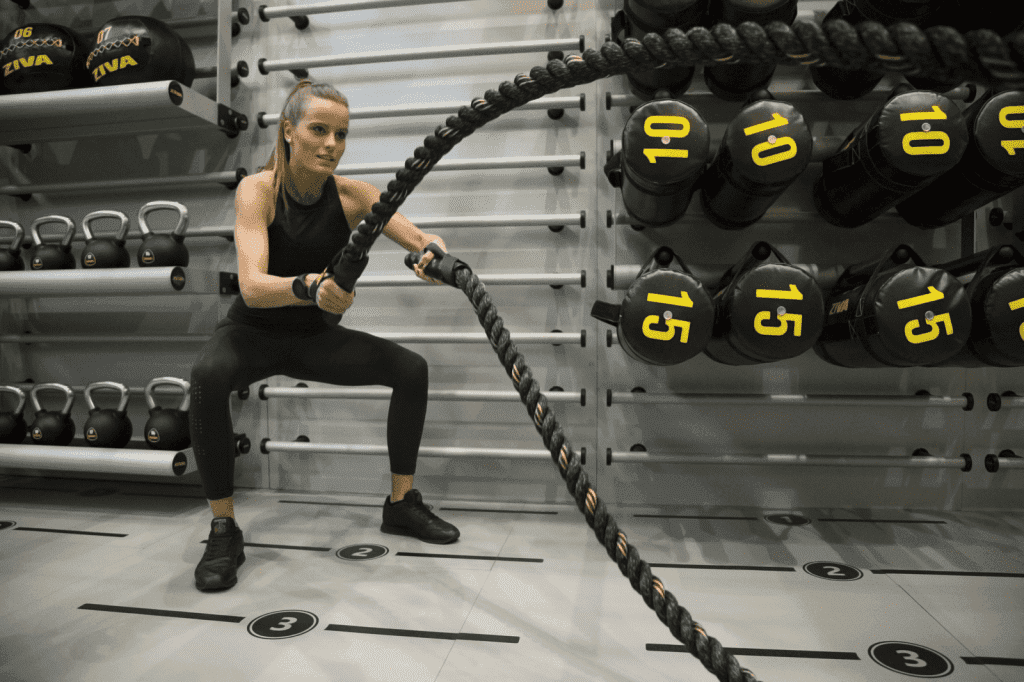At Urban Sports Club we pride ourselves on having such a wide range of sporting activities that everyone can find something they enjoy. You can play water polo, go horse riding, surfing or skateboarding. However, most of our lovable community prefer good fitness training.
CrossFit, Functional Training, HIIT, and Circuit Training are some of our most popular activities – probably because they’re the fastest, most efficient way to get fit. Whether you are a fitness fanatic or are more interested in slower sports such as yoga or Pilates: There are exercises that can be found in almost every workout and are universally feared. But are they really necessary? Do we really have to struggle through this? Or can we get fit without it?

Running
It’s official: almost everyone hates running. Running and sprinting training are two of the most feared exercises. Quite simply because it hurts – it is exhausting for the legs, the lungs and you often just gasp for air. So should we really include it in our fitness routine?
Yes, says Harvard. A study by the American College of Cardiology found that just five to ten minutes of low-intensity running every day is enough to extend your life for several years. But the good news is that a healthy dose of running isn’t as challenging as you might think.
“There is no question that you will feel better when you make the decision to tackle it – whether walking, jogging or cycling,” says cardiologist Dr. Aaron Baggish. However, he recommends jogging / running 2.5 hours per week to get the benefits of cardiovascular fitness. True to the motto “A little is good, but a little more is probably even better,” he says.
Burpees
Nothing fills a room with more fear than burpees. Mike Finlay, Personal Training Manager at VENT Fitness Guilderland, says, “Burpees get your whole body into motion that requires full body cardio training that uses strength movements. Let’s break it down: you crouch, go into the plank, jump back into the crouch, from there you jump up with your arms straight and repeat the whole thing. Sounds really exhausting.
But there’s another reason burpees can get you out of breath in five seconds: The movement activates all of your muscles throughout the entire exercise. Our brains are used to telling us to breathe when our muscles are relaxed, but they never relax during burpees – which leaves us completely breathless.
So are they really good for us? Burpees are a great way to get your heart rate up quickly without weights or accessories. But Michael Boyle, a certified functional strength trainer, recently wrote in an article for Women’s Health that burpees are not that good for you. He calls burpees “an inherently bad exercise” and says that “throwing yourself to the ground and getting up immediately” is “a really stupid idea”.
Boyle says you should ask yourself why you are doing burpees. Do you do them to improve your condition? To strengthen your upper body? Is it to reap the benefits of a squat or for interval training? Boyle believes that you can target these individual muscle groups in a much safer way through other exercises. Here are some alternative full body movements: bear crawls, walking push ups, mountain climbers, and pike jumps. Here you go.

Box jumps
Every CrossFitter or HIITler will know the pain of box jumps. This exercise is challenging for several reasons – the jump is very demanding on your cardiovascular system, and the movement is a coordination challenge. Many people fear box jumps not only because of the increase in heart rate, but also because of the sheer fear of breaking their shins.
However, there are techniques you can use to jump on the box safely. And once you master them, injuries are unlikely. So you can use the advantages of the efficient cardio move without fear.
- Jump off the ground with both feet and land on it again.
- Keep your knees (bent) above your toes.
- Land with feet flat, hip-width apart and Crouch on the box with your knees bent.
- Use your arms to push yourself off the floor with a swing.
- Tense your abdominal muscles.
To all box jump enemies: The exercise is really good for you and your body. They demand explosive strength, speed and coordination, which is a fantastic full body workout. When you box jump, every muscle in your legs works, you build your core, and you can burn between 800 and 1000 calories an hour (although we doubt anyone would ever choose to box jumps for an hour). So next time box jumps are part of your workout, take a deep breath and think how good you will feel afterwards.
Plank
Max Lowery is personal trainer and author of the book “2 meal day”. He says the plank is the exercise people get wrong most often – because while it’s good for the abs, it’s all about execution. “You often see people hold the plank for seven minutes,” he says. “But personally, I can’t think of anything more boring and usually only hold it for 30 seconds.” As a personal trainer, Lowery knows how to do the plank so that it is very effective in a short amount of time. “It’s a very simple technique that radicalizes the way you train and can make any other exercise more effective,” he says.
The plank strengthens your core and affects your whole body equally. For a super effective plank workout, Max says: “Tense your abdominal muscles as much as possible, move your hips down, push your elbows back and tense your glutes.” And hold that for 30 seconds, not 7 minutes.
Pull-ups
We hate pull-ups because most of us can’t really do them. But is it worth learning them? What are the advantages of being able to move your body weight up and down on a bar? It hurts your hands! In fact, learning to pull-ups can bring long-term benefits. You can train wherever there is a bar – because the exercise affects the whole upper body. It is also a good exercise to increase your grip strength, which is useful in everyday life when carrying your suitcase or shopping.

The learning process is also beneficial. You climb slowly: You start by jumping on the bar and slowly lowering yourself back down. Because that’s pretty exhausting. By the time you are able to do your first pull-up, you will have strengthened your back, shoulder and arm muscles. As soon as you have done the first pull-up, you can increase your repetitions.
All exercises are good for you in some way, but only if you do them safely and correctly. And if you don’t like an exercise, just (d) ask a trainer for an alternative – we’re sure they’ll be happy to help! But the good news overall is: burpees are not necessary.
